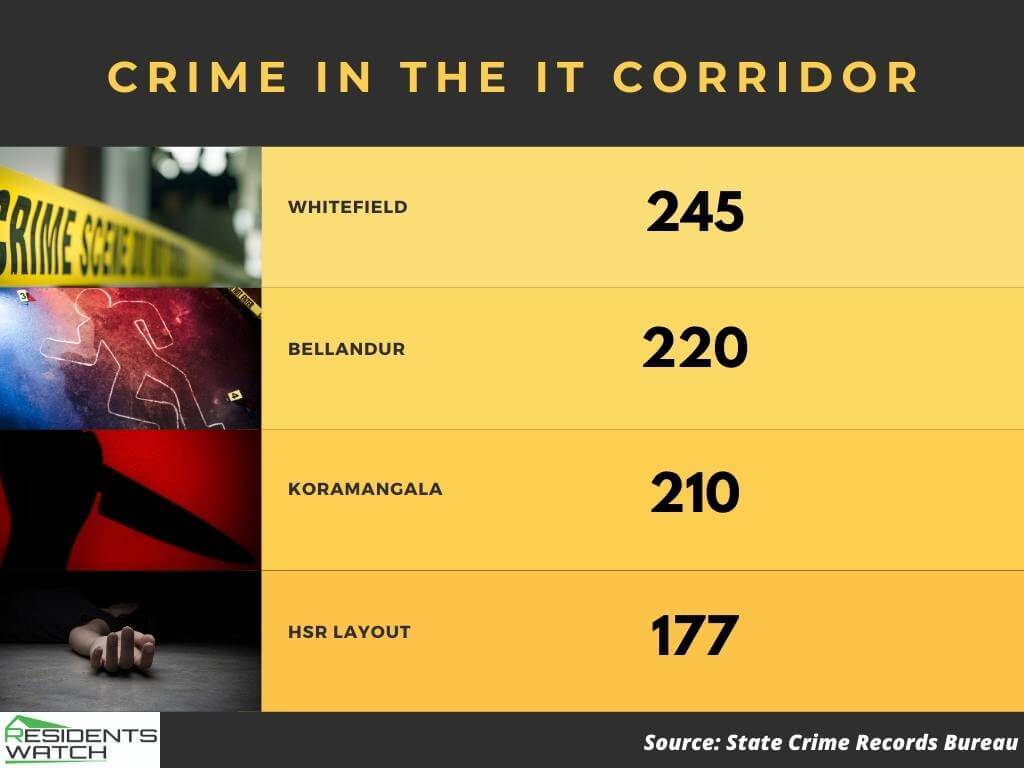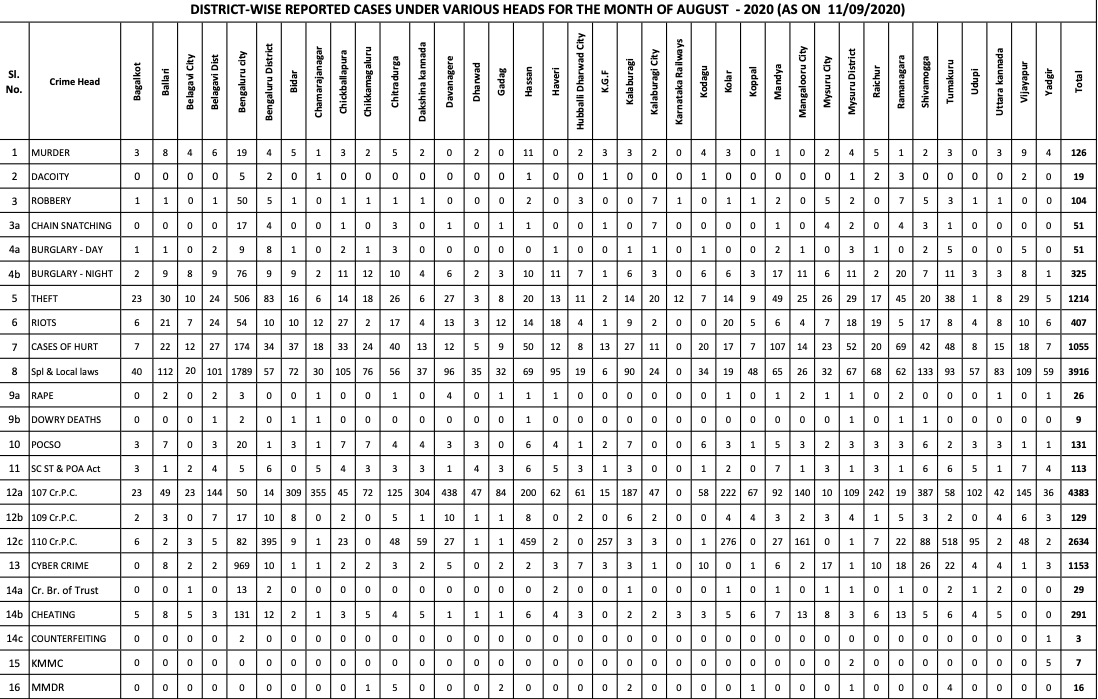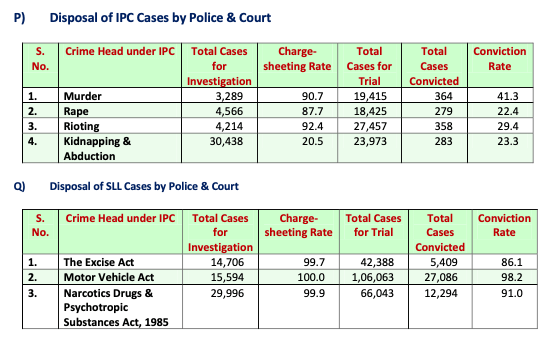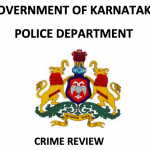
By Zahid H Javali
Whitefield tops the number of crimes recorded this year in the IT corridor. This neighbourhood is followed by Bellandur, Koramangala, HSR Layout, and Electronic City in that order. Compared to the crime trend in all of 2019, the biggest difference is that Bellandur has climbed up in the rankings. Last year, it was at No 4 with 376 incidents while Whitefield topped with 538 crimes.
This year, as of October 10, the difference between the top three is not much: Whitefield (245), Bellandur (220), Koramangala (210). Making up the tail are Electronic City with the least number of crimes at 155, followed by HSR Layout at 177. If we were to compare these statistics from the Karnataka State Crime Records Bureau with a non-IT neighbourhood like Indiranagar that stands at 135, we can see that the crime in the IT corridors almost doubles.
Lucrative hub for criminals
The reason is not far to seek. Police officials point out that the high incidence of the IT crowd, and their disposable income attract thieves to them. Some miscreants visit the city on weekends to indulge in thefts and go back to their native place after the crime. With the various stages of lockdown, their movement was restricted, leading to fewer crimes. However with unlock 5.0, it appears to be business as usual. However, as people are largely at home, thieving has become a riskier enterprise.
But thieves are not leaving anything to chance when there is an opportunity. Which is why, two-wheeler and mobile thefts are the highest and easiest crimes to commit in Bangalore. Residents report that most stolen phones find themselves being sold on SP Road, the electronics hub. Similarly, high-end vehicles stolen here have been traced in Rajasthan where drug traffickers were using it for their escapes. Read our previous report on this interesting and insightful incident for more details.
Over 90% of Karnataka’s crimes happen in Bengaluru

If we compare with the crime in general in Karnataka, Bangalore city takes the cake, as more than 90% of crime is concentrated here. This chart by the National Crime Records Bureau should give you a clear picture. In 2019, there were 204 murders in Bangalore, followed by 68 in Belgaum, 59 in Vijayapura, and 56 in Tumkur. This shows the glaring difference between the first and second ranks. Most murders were committed for gain, followed by property disputes, personal vendetta, and sexual jealousy. The other most number of crimes were hurting people (3178), kidnapping and abduction (1053), assaults on women (803), and attempt to murder (556). On a national level, the conviction rate portrays a glaring picture of inequality. While rape has a dismal 22.4% conviction rate, the individuals found indulging in drugs are convited 91% of the time, followed by those violating the Motor Vehicle Act and Excise Act at 98 and 86% respectively. Those who murder get convicted 41% of the time, while those involved in kidnapping and rioting largely escape as their conviction rates stand at 23% and 22% respectively.

Cyber crimes, thefts, and gambling top
The total number of crimes that violated the Indian Penal Code (IPC) stood at 27251 in Bangalore City, followed by 5386 in Bangalore Rural, and 4927 in Mandya. If we look at the statistics of August 2020 (the September statistics are yet to be out), there were 19 murders in Bangalore, followed by 5 dacoities, 50 robberies, 17 chain snatchings, 969 cyber crimes, 506 thefts, and 1789 cases relating to special and local laws. As these make up the largest category of crimes committed, wonder what they contain? Everything from violations in arms act, wildlife protection, consumer protection, copyright act, civil rights, children’s rights, customs and excise, corruption, forests, rape, gambling, prostituion, and passport. Among all these, gambling and betting record the most number of offences.



